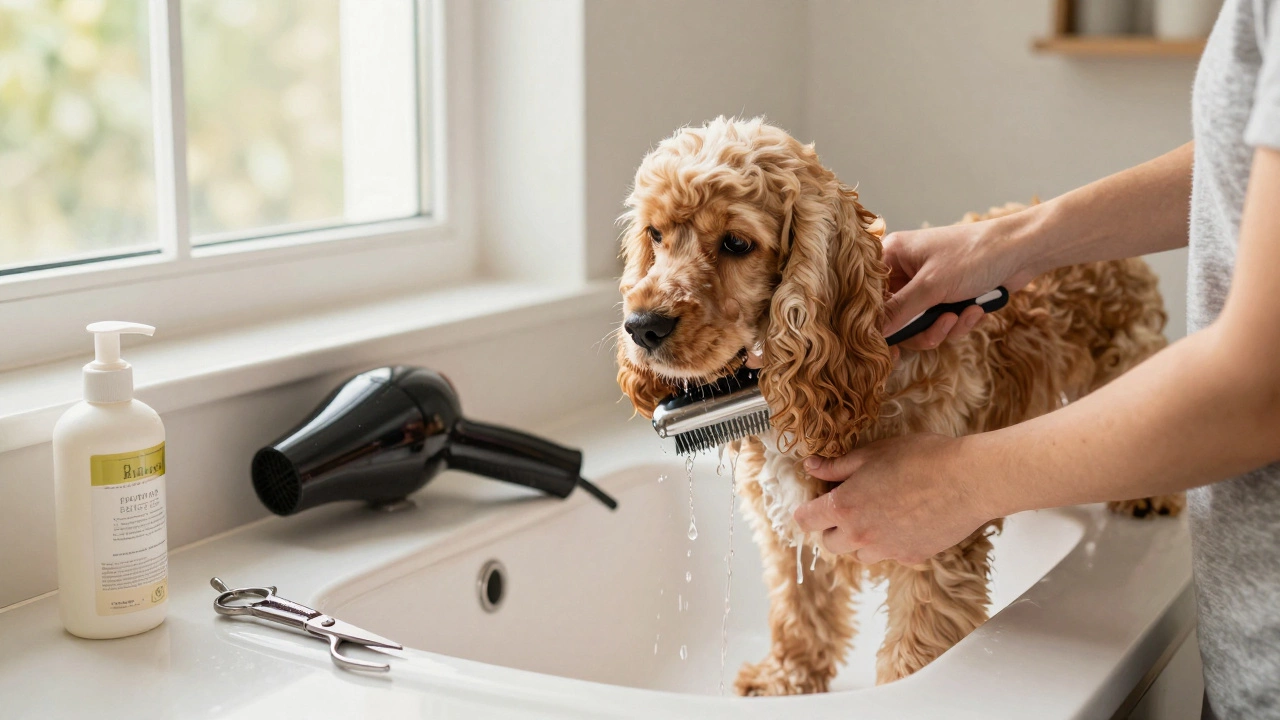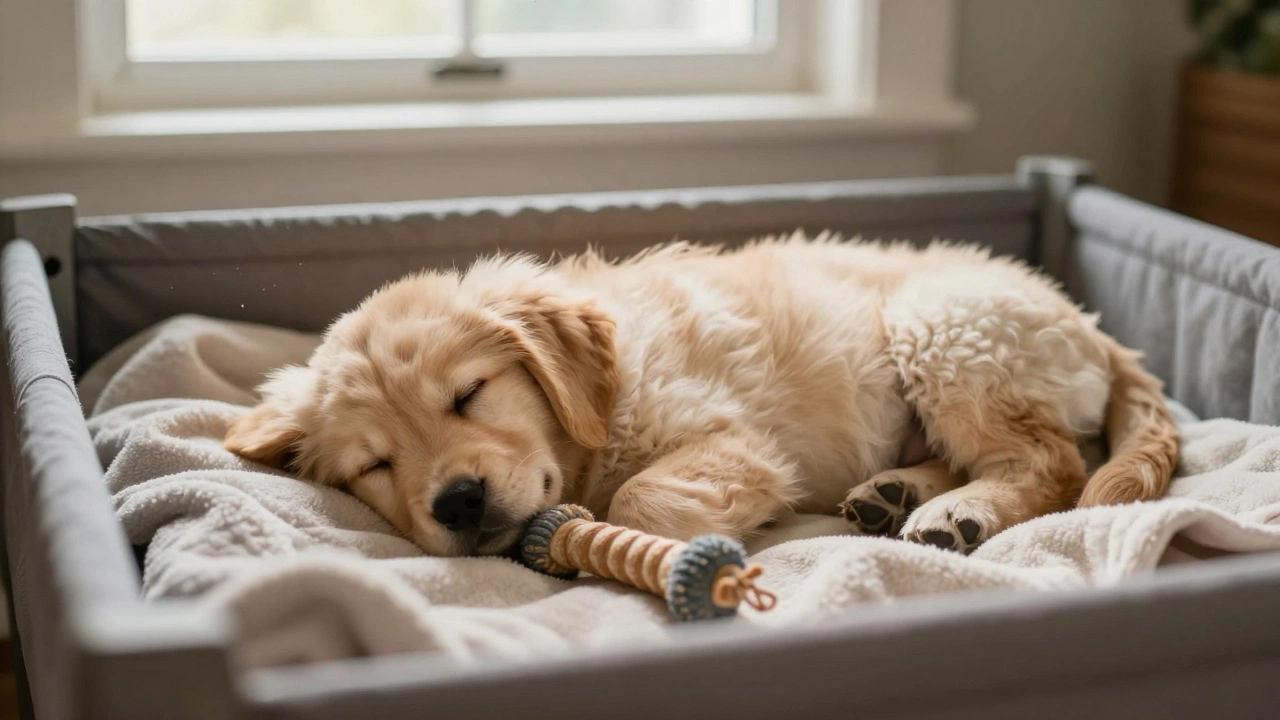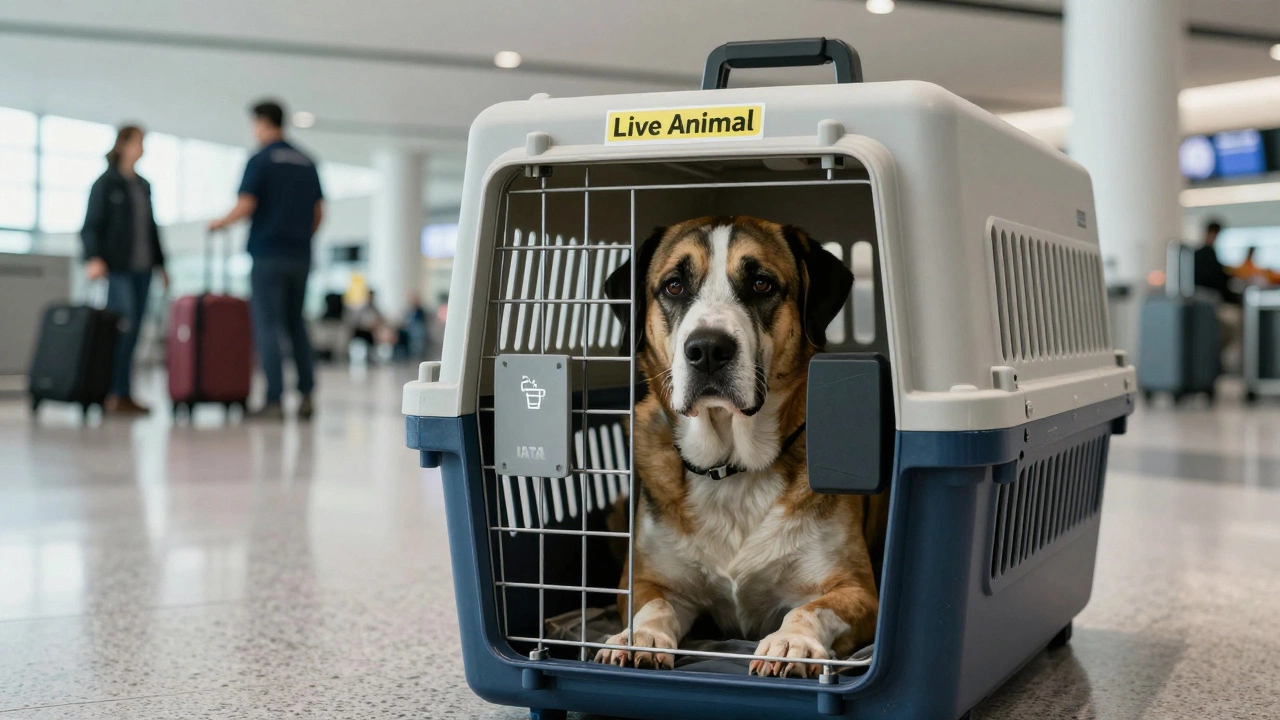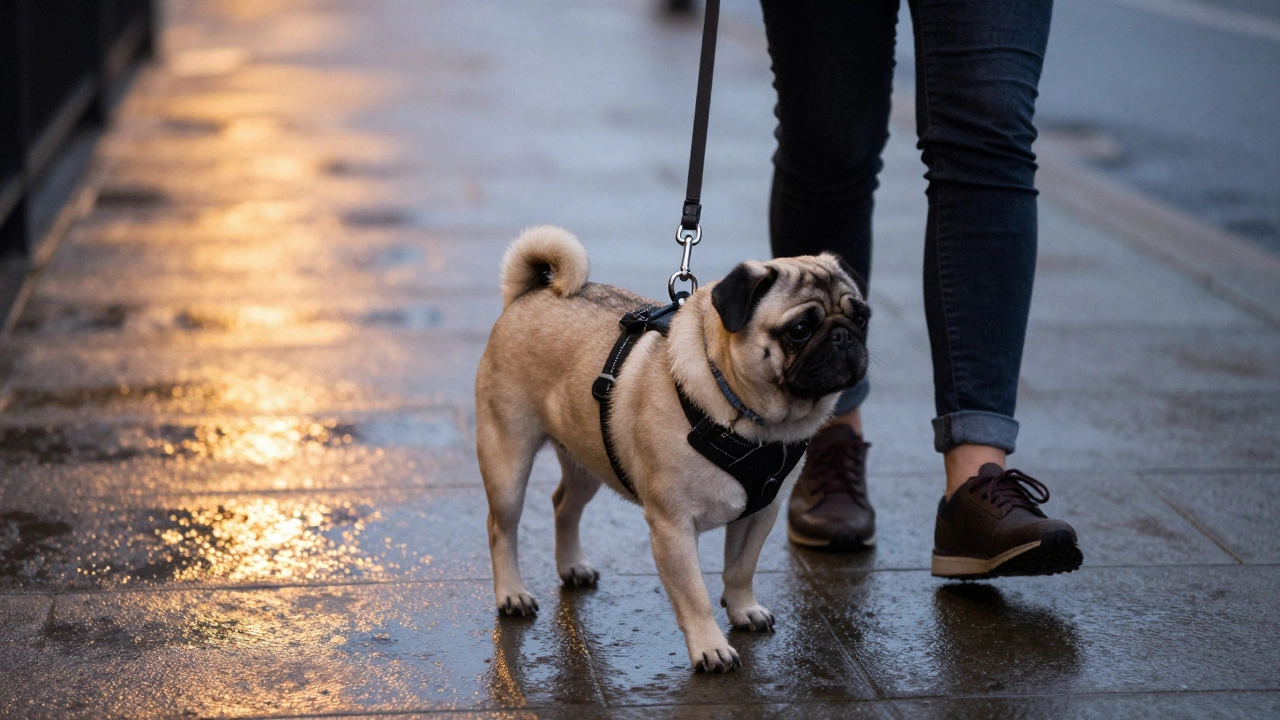Ever had that moment where you catch a whiff of the dog bed and wonder if it’s secretly growing its own ecosystem? Yeah, same. A dog bed that’s past its prime isn’t just a stinky eyesore—it can be a real problem for your dog’s health and comfort. And honestly, dogs pick up on the discomfort long before we do.
If you can’t remember when you last swapped out your dog’s bed, there’s a good chance it’s overdue. Mats that lose their support make joints ache and flatten so much that your pup might keep switching spots all night. When the smell refuses to leave, or stains are baked in despite your best cleaning efforts, it’s definitely not doing your home any favors either.
Sometimes it’s obvious—a ripped-up cushion, stuffing peeking out, or a force field of odor that survives every wash cycle. But other times, the signs are subtle: your dog suddenly prefers the floor, or you notice scratches and bites where there weren’t any before. Paying attention to these little changes saves you (and your pet) a headache down the line.
- How Long Does a Dog Bed Last?
- Clear Signs It’s Time to Toss It
- Easy Ways to Make a Dog Bed Last Longer
- What Happens if You Wait Too Long?
- Replacing the Bed: Smarter Choices and Eco-Friendly Disposal
How Long Does a Dog Bed Last?
The usual lifespan of a dog bed really depends on a bunch of things. Most decent dog beds stick around for about one to three years if you’re using them daily and cleaning them often. Cheaper or super-thin mats? They barely last six months in a busy house—sometimes even less if your dog is a bed digger or a chewer.
Beds made with strong memory foam or stacked layers can hold their shape for a couple of years, especially for medium and small dogs. Big breeds or seniors with creaky joints break down the padding faster, sometimes flattening a regular bed in under a year. Dogs that spend most of the day outside or get wet a lot can wreck a dog bed way faster thanks to dampness, dirt, and bacteria.
Got a puppy? You can expect a shorter bed lifespan because puppies love to chew, scratch, and sometimes have accidents—all of which wear down covers and stuffing super fast.
Here are some things that chew up the dog bed lifespan in no time:
- Frequent washing (especially with harsh detergents)
- Rough play or digging
- Dogs with allergies or skin issues that need extra cleaning
- Low-quality fabrics or thin padding
The fanciest orthopedic or tough beds usually advertise a "warranty" or guarantee up to 5 years, but that's rare unless you’re spending a chunk of cash. Most people swap out their dog’s bed every 1-2 years, just based on smell, comfort, and visible wear. And honestly? That’s a smart move if you want your buddy to stay cozy and healthy.
| Dog Bed Type | Average Lifespan |
|---|---|
| Standard Stuffed Bed | 6-18 months |
| Memory Foam/Othopedic | 1-3 years |
| Waterproof/Chew-Resistant | 2-5 years (with good care) |
| Fleece or Plush Mat | 6-12 months |
If your dog bed doesn’t feel as squishy or the corners look crusty, it’s better to start looking for a new one than risk your dog getting sore or sick. A fresh bed pays off in happy naps and less stink around the house.
Clear Signs It’s Time to Toss It
Wondering how to know when your dog's bed is past its best? There are dead giveaways, and ignoring them can mess with your dog’s health. Here are the top signs it’s time to stop clinging to that bed and look for a new one:
- Obvious Odor: If the stink lingers no matter how much you wash the bed—yeah, it’s time. Odor that won’t budge usually means bacteria and fungus have moved in for good.
- Flattened or Lumpy Cushioning: The whole point of a dog bed is comfort. If the bed is flat, lumpy, or the padding keeps shifting to weird spots, your pup’s joints and back are taking the hit.
- Stains and Mold: Once stains set in and mold appears (often as dark spots or a musty smell), the bed is basically a biohazard. Dogs can be sensitive to mold, and so can humans.
- Shredded Fabric, Exposed Stuffing: Chewing and scratching can turn a tough bed into a shredded mess. If you’re noticing loose threads, exposed foam, or stuffing everywhere, toss it—swallowing these can seriously harm your pet.
- Increased Allergies or Itching: More scratching than normal, sneezing, or watery eyes? Old dog beds trap dust mites, dander, and even pests like fleas. If your dog’s itching has picked up and nothing else has changed, that’s a clue.
- Refusal to Use the Bed: Does your dog suddenly pick the floor, couch, or your bed instead? If your pet's ignoring their designated spot, it probably means their dog bed no longer does the job.
To put things in perspective, the average lifespan of a cheap polyester-bed is about 6-12 months. Higher-end memory foam ones can last up to 2-3 years, but only if you keep them clean and well maintained.
| Warning Sign | Why It Matters |
|---|---|
| Lingering Odor | Bacteria & fungi buildup |
| Lost Support | Joint pain, bad sleep |
| Visible Mold or Stains | Health risk |
| Exposed Stuffing | Choking hazard |
| Dog Avoids Bed | Uncomfortable or unsafe |
Spot even one of these signs? Don’t wait. A fresh dog bed pays off every single night your dog gets better rest—and so do you.

Easy Ways to Make a Dog Bed Last Longer
Let’s be real—dog beds aren’t cheap, and nobody wants to toss them after just a few months. The good news? You can stretch the life of a dog bed with just a bit of effort. Most beds break down faster from two things: grime and rough use. Tackle both and you’ll save yourself some cash.
- Use a washable cover. A cover you can zip off and toss in the laundry does wonders. Wash it once a week if your dog sheds a lot or gets messy. Good covers stop fur, slobber, and even little accidents from soaking into the foam or stuffing.
- Keep the bed dry. Moisture is your enemy. It breeds odors and makes the inside clump up or break down. Wipe your dog’s paws and fur if they’re wet before they hop on.
- Vacuum the bed. Regular vacuuming helps control dust mites and hair. Use the upholstery attachment and get into the seams where gunk piles up.
- Spot clean stains fast. Don’t let pee, vomit, or who-knows-what dry on the bed. Dab up messes right away with a cloth and a gentle pet-safe cleaner.
- Rotate two beds if you can. Dogs love options, and swapping between beds gives each one time to bounce back after cleaning. This means less wear and tear on just one bed.
- Trim your dog’s nails. Sharp claws tear through fabric fast. Keeping nails short means less rips and holes.
If you’re going to wash the whole bed, check the tag first: some stuffing types or foams get ruined in the machine. Always dry it all the way—otherwise it can get musty, which is gross for both dogs and humans. Don’t forget, a clean and comfy bed isn’t just about scent or looks; it actually helps your buddy sleep better.
| Task | Recommended Frequency |
|---|---|
| Vacuum | 1-2x per week |
| Wash cover | 1x per week |
| Full bed wash | Every 1-3 months |
| Nail trim | Every 3-4 weeks |
Stick with these steps and you’ll definitely get more out of your dog bed lifespan—and so will your dog.
What Happens if You Wait Too Long?
So, what’s the big deal if you keep holding onto your dog’s old bed? It’s more than just a scruffy look or a lingering smell—there are some real consequences for your dog and even you.
First up, let’s talk about comfort. Once the cushioning in a dog bed breaks down, it’s like sleeping on a pancake. Your dog’s joints and bones start taking the hit, especially for older pups or breeds prone to arthritis. They might even stop using the bed altogether and choose the floor, which can make pain and stiffness worse over time.
Next, hygiene takes a dive. Dog beds are basically magnets for dirt, fur, sweat, drool, and whatever your pet steps in outside. If the bed can’t be cleaned properly anymore, it quickly becomes a breeding ground for dust mites, bacteria, and sometimes even mold. This can lead to skin infections, allergies, and gross smells that just never go away. According to the National Center for Biotechnology Information (NCBI), pet beds can harbor as much bacteria as a kitchen floor if not washed regularly.
The trouble doesn’t end with Fido. Those airborne allergens and dust mites can trigger sniffles and itchy skin in humans, especially if someone in your family has allergies or asthma.
- Replace dog bed regularly to avoid joint and allergy problems
- Old dog beds can trigger hot spots and rashes on sensitive skin
- Stubborn smells attract more bacteria and even pests over time
Check out the risks of keeping a bed too long:
| Problem | Potential Result |
|---|---|
| Loss of support | Joint pain, poor sleep |
| Bacteria buildup | Skin conditions, bad odor |
| Allergens & mites | Human and pet allergies |
| Mold growth | Possible respiratory issues |
Bottom line: a worn-out dog bed isn’t worth the risk for your dog’s health or anyone else’s comfort at home. If you’re on the fence, trust your eyes—and your nose.
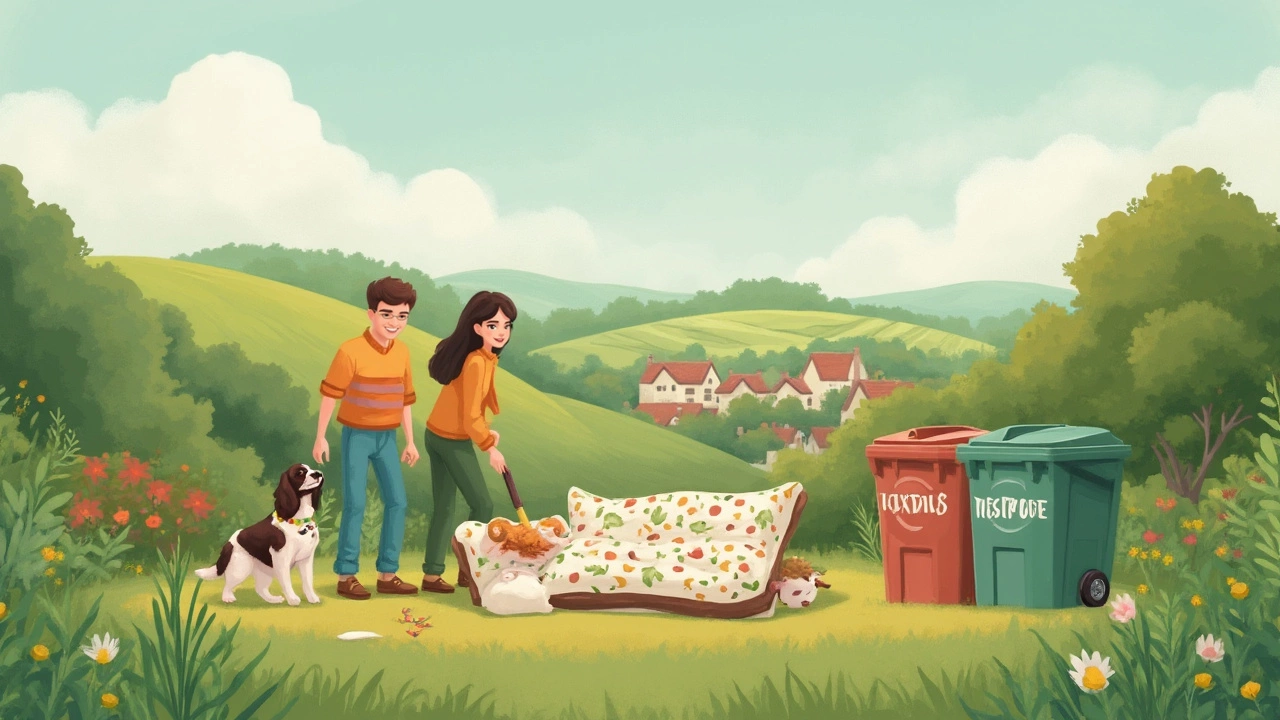
Replacing the Bed: Smarter Choices and Eco-Friendly Disposal
When your dog’s worn-out bed has finally reached the end, grabbing just any new cushion isn’t the answer. Let’s break down how to pick a replacement that nails comfort, lasts longer, and doesn’t create a landfill headache.
The best dog bed lifespan options have tough covers (think ripstop nylon or heavy-duty canvas) and removable fabric for easy wash cycles. Orthopedic foam is a smart pick for older dogs or big breeds. Look for zippers and extra stitching over glued seams, since they hold up better when dogs dig or carry their beds around. Waterproof lining can shield that inner cushion from accidents, keeping things fresher way longer.
It pays to shop from brands that care about the environment. Several dog bed makers now use post-consumer recycled stuffing, and some covers come from upcycled plastic bottles. That’s not just good for your pet – it’s less waste for the planet too. According to the American Pet Products Association, about 63 million dog beds are tossed each year in the U.S. alone. Cutting that down even a little makes a real impact.
| Feature | Benefit |
|---|---|
| Removable, machine-washable cover | Easy cleaning, longer lifespan |
| Orthopedic memory foam | Better joint support, perfect for aging dogs |
| Eco-friendly/recycled materials | Reduces landfill waste, lessens environmental impact |
So what do you do with the old dog bed? If it’s still got some life, wash it and donate to your local animal shelter or rescue. They’re always looking for extra bedding. Beds that are too far gone shouldn’t just sit in your dumpster—take out the foam (some recycling centers accept it), then cut up the fabric for cleaning rags or garden knee pads. Some communities even have textile recycling bins that will happily take used dog accessories off your hands.
As eco-expert Dr. Susan Jacobs said about pet product waste:
“Pet owners have a big opportunity—choosing a more sustainable dog bed and disposing of it responsibly can shrink your carbon pawprint while keeping your pet comfy.”
Getting rid of an old bed doesn’t have to be wasteful, and choosing a well-made, earth-friendly replacement keeps your dog happy—and the planet a little cleaner.


